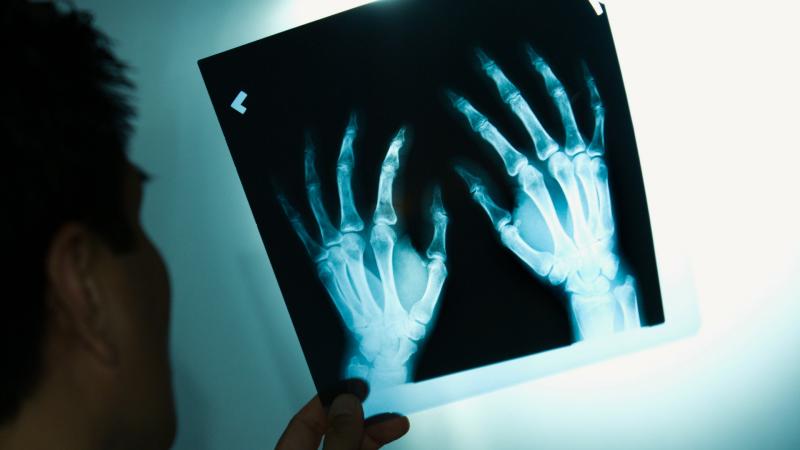
From the pattern of a honeycomb to the complexity of a DNA strand -- the intricate structures found in nature have astounded and inspired many scientists and designers for centuries. Many newer and better technologies in the fields of medicine and research, like the bullet trains in Japan inspired by the kingfisher's beak, or the prosthetic arm inspired by tentacles, were possible, thanks to nature. Now, a study by researchers from the Indian Institute of Technology (IIT), Hyderabad, aims to study the structure and composition of human bones to help in repairing them.
In the world of medicine, the technique most commonly used to repair bone tissue is called a bone graft. A surgeon would either remove some bone tissue from one part of the body and graft it to the injured area or use tissue obtained from a donor. But, procuring the required amount of bone tissue for a graft is not easy. An alternative to this is to 'manufacture' bone tissue artificially that is similar to natural bone tissue in porosity and composition. The study aids in manufacturing such a bone tissue.
“Bones have a complex hierarchical structure and behave differently on different scales of measurement. That’s why studying the levels of biological organisation and mimicking these structures at the macro and nano levels are important for bone tissue regeneration”, said Dr. Subha Narayan Rath, Associate Professor in the Department of Biomedical Engineering, IIT Hyderabad, who has lead the team along with Dr. Chandra Shekhar Sharma, Assistant Professor in the Department of Chemical Engineering, IIT Hyderabad. In their study, published in the journal Tissue Engineering and Regenerative Medicine, the researchers have successfully mimicked the structure and pattern of bone tissue, which can improvise current methods used to regenerate and repair broken bones.
Scientists study bones at three levels. At the superstructure level, they analyse the overall size and shape of the bone. The macrostructure level dwells on how cells are arranged in the bones, and the subcellular level deals with the nanostructure of the bone tissue. Like glass, bones are anisotropic in nature. Their elasticity and strength differ based on the direction in which stress or strain is applied. This property is due to the way in which the collagen fibres and other minerals that make up the bone are oriented. Interestingly, at the nano level, bones are isotropic and have the same physical properties irrespective of the direction from which they are measured.
In this study, the researchers made three-dimensional scaffolds that mimic the porosity and structure of the extracellular matrix of the bones, with the help of electrospinning. Besides, they have used photolithography to micropattern the light-sensitive substrate, on which mesenchymal stem cells (MSC) or adult stem cells can grow and align themselves. When the researchers tested this substrate, they found that the stem cells developed into different cells that make up the bone tissue.
The researchers also observed that the orientation of the mesenchymal stem cells, growing on the substrate, resembled the structure of a spiral staircase - a finding documented for the very first time. The helicoidal arrangement of fibres resemble the natural hierachical structure of bone tissue.
“This study highlights the importance of physical cues in osteo-differentiation of mesenchymal stem cells on a patterned substrate without having to add any chemical factors,” said Ms. Sharanya Sankar, Research Scholar from IIT Hyderabad, who is the first author of the study. The study could drastically improve bone implant surgeries in the future with the development of smart biomaterial surfaces for tissue regeneration and repair.
Dr. Subha Narayan Rath and his team plan on using their findings to develop free-standing films -structures similar to hierarchical bone tissue and made from biomaterials. They postulate that this film could be used to further bone tissue regeneration technology.






